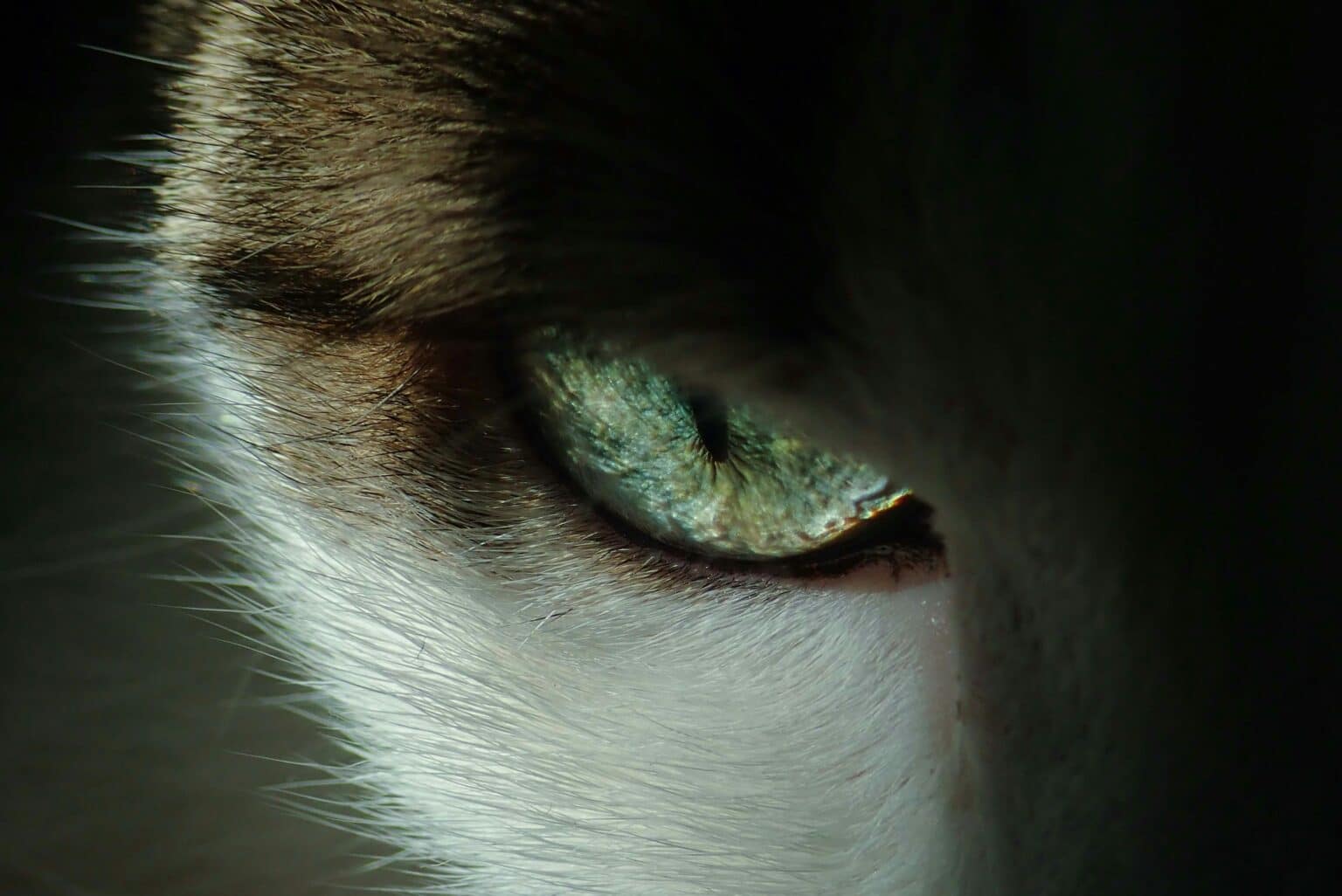Have you ever wondered how your adorable ball of fur really perceives the world around it? As a happy cat owner, you naturally want to know every secret about cats’ eyes, to understand how your favorite feline sees your home or recognizes your presence. Understanding how felines see is essential to strengthening the bond between you and your mustachioed companion. So, are you ready to plunge into the cat’s astonishing vision? You might just be surprised by its peculiarities!
How do cats perceive colors? Discover the truth!
Do cats see in black and white?
Contrary to popular belief, cats don’t see the world in black and white! But there’s no need to imagine that your cat can admire the rainbow in all its splendor either. Scientific studies (such as those detailed by Science & Avenir) confirm that feline eyes perceive fewer colors than we do, and with less intensity. So, felines see a somewhat pale world with limited colors, without being totally “color-blind” in the strict sense of the word.
What colors are visible to cats?
Your cat perceives blue, green, yellow and many shades of gray. On the other hand, colors such as red or pink literally go out the window! It’s good to know when you’re choosing toys for cats: prefer blue or green hues to red ones, so they have maximum fun!
Summary: Cats mainly perceive blue, green and yellow, but not red hues. Adapt your color choices on a daily basis for better interaction.
Cats’ night vision: why do they see so well at night?
An eye adapted to night vision
If your little domestic cat turns into a night-hunting pro, it’s thanks to some impressive adaptations to its eyes! A reflective membrane called tapetum lucidum amplifies the available light. You know, the same membrane that makes their eyes glow in the dark. What’s more, their vertical pupils dilate greatly at night to capture a maximum number of photons. So, even on a very dark night, your kitty will spot the slightest movement on your wooden floor!
Summary: Thanks to a specially evolved eye, your cat is able to perceive the smallest details even in almost total darkness.
The impact of good night vision on cat behavior
Lively nights guaranteed when you share your life with a cat! Their exceptional night vision explains their natural habit of hunting, exploring or playing late at night. This can lead to some memorable night-time play sessions and wake-up calls – nothing better than a toy mouse at 3 a.m.!
Summary: Your cat’s remarkable night vision has a major influence on its lifestyle and natural habits.
Distance and movement: how do cats see the moving world?
Motion perception in cats
Your cat’s specialty? Detecting the slightest movement. Feather, ball, insect or even a stroller in the street: nothing escapes his attention, thanks to a visual acuity specially adapted to hunting! That’s why your play sessions with him and mobile toys like interactive cat toys are so successful.
Summary: Cats have highly motion-sensitive vision, a real asset they use every day to hunt and play.
How far can cats see clearly?
Did you know that your tomcat is slightly short-sighted? His sharp vision is most effective at short and medium distances, ideally between 30 cm and 2 meters. Beyond that, details become progressively blurred. So don’t forget to arrange his space with close play areas and interesting objects, providing visual stimulation during the day.
Summary: A cat’s visual clarity diminishes with distance. Create an environment adapted to his vision to stimulate him daily.
How does your cat perceive your face and everyday objects?
Do they recognize our faces clearly?
Your cat senses your presence much better through your voice, scent or habits than through your precise physical features! Rest assured, this in no way detracts from the love or bond he has forged with you. You’re unique in his eyes, even if he doesn’t necessarily notice your new hairstyle!
Summary: Your cat recognizes you more by your habits, voice and smells than by your precise facial features.
What do they see clearly in their everyday environment?
Anything that moves or sparkles is the object of his undivided attention: light reflections, small moving objects, shadows projected on the wall… To keep him happy, consider offering your cat play sessions with laser pointers, and install small hanging mobiles to constantly stimulate his visual interest.
Summary: Cats are particularly good at seeing anything that moves or sparkles. Think about incorporating these elements into your cat’s daily environment.
Conclusion
Now that you know exactly how cats see, it’s much easier to anticipate and understand their day-to-day reactions. Use this valuable information to make your cat’s habitat visually stimulating and strengthen your bond day after day. So take a close look at your cat: what do you think he really sees of the world?
FAQ – Frequently asked questions about cat vision
Can my cat really see well in total darkness?
Not entirely. Although your cat’s night vision is exceptional, it still needs a minimum of light to distinguish shapes.
Which toys are best suited to cats’ vision?
Prefer blue or green mobile toys that are easy for your cat to see and produce quick or subtle movements.
Why do the cat’s eyes glow in the dark?
It’s the tapetum lucidum, the reflective membrane that makes the eyes shine and amplifies the available light in low light conditions.
Can cats follow TV programs or videos clearly?
Yes, they can distinguish screen movements, but they prefer specific content such as fast-moving animals.
Does my cat’s stare mean he can see me clearly?
Not necessarily. A fixed gaze is more indicative of curiosity, affection or marked interest than perfect eyesight!






